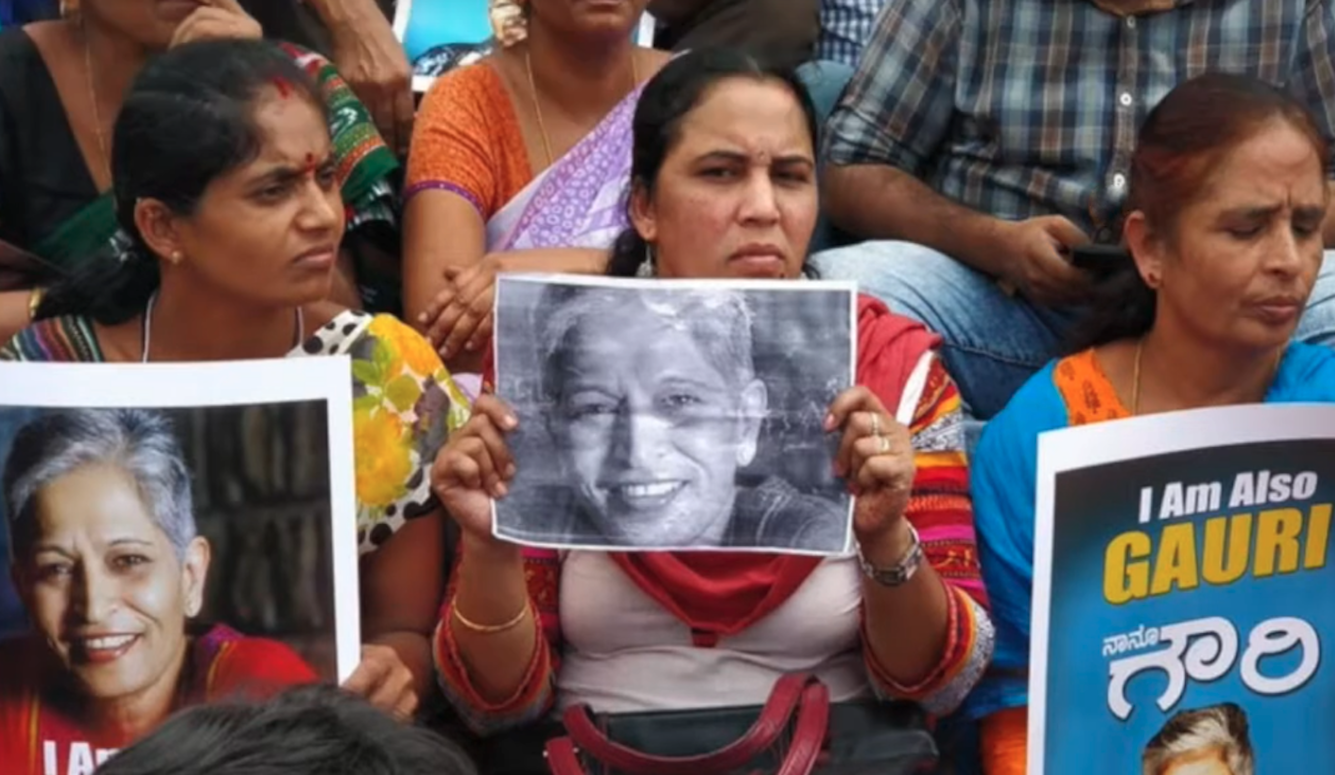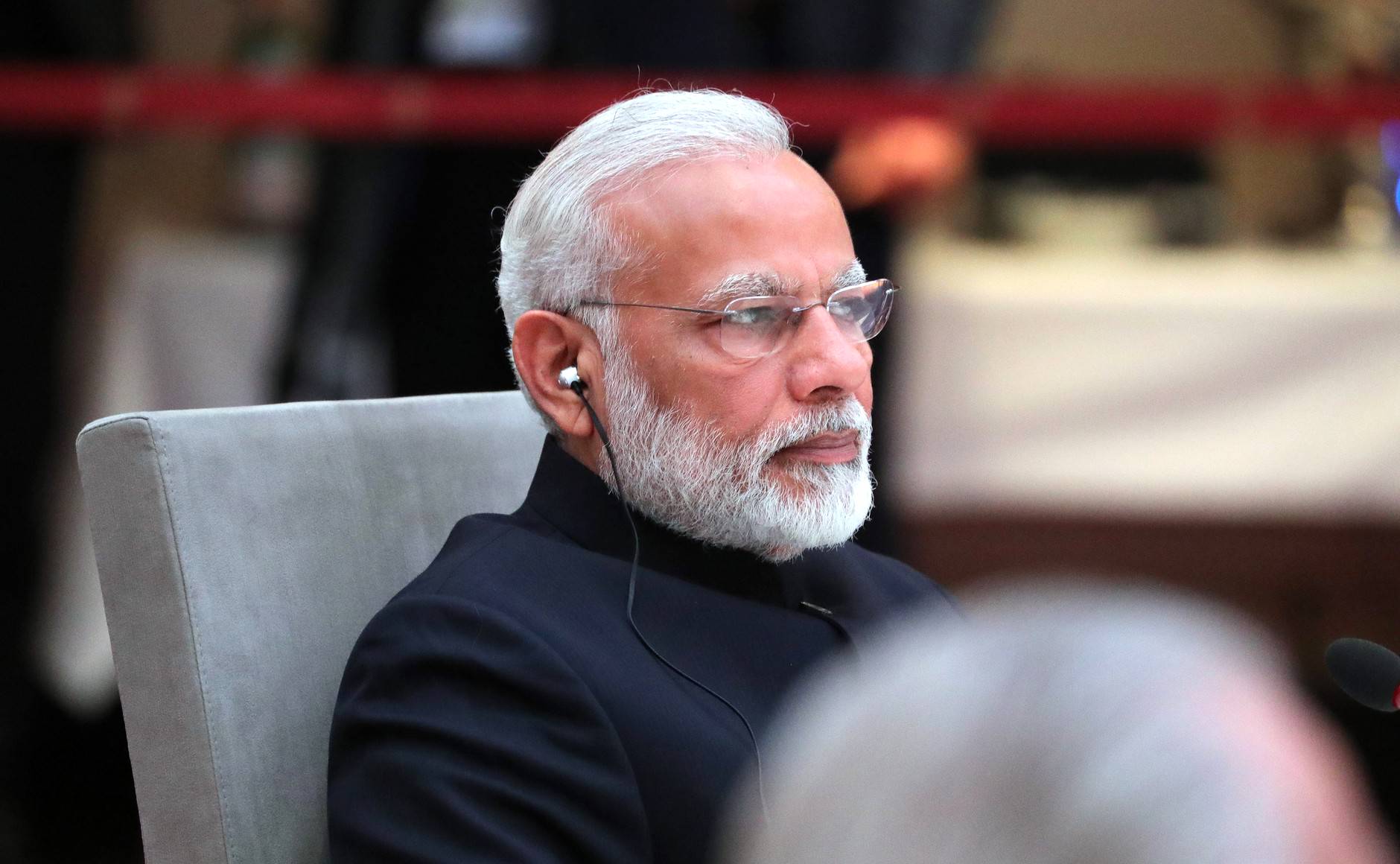India
India’s Increasingly Despotic Crackdown on Journalists
The deadly attacks on journalists, who now work within a tightening entanglement of political bosses and business behemoths, signifies the rise of India’s elected despots.

In the early days of the 2020 COVID lockdown, Siddharth Varadarajan had some surprise visitors at his Delhi home. A group of about eight policemen from the adjoining state of Uttar Pradesh (UP) came to serve the founding editor of the online magazine the Wire a notice to appear in the temple town of Ayodhya, in connection with a police report for making an “objectionable comment” about Yogi Adityanath, UP’s Chief Minister. The police had driven all the way from Ayodhya, about 600 kilometres away, despite the lockdown. The immediate provocation was an article in the Wire that had misquoted Adityanath as saying Lord Ram would protect his devotees from the coronavirus. It was a flimsy excuse. The publication had already fixed the error the next day, and posted a clarification. The shakedown was payback for something else: the fact that it existed.
Pesky journalists such as Varadarajan, and a new crop of similarly doughty media platforms that provide space for views that don’t echo the established narrative, are a thorn in the side of despotic power. By contributing to a diversity of views, these journalists threaten the echo chamber that despotic power builds to fortify itself. The price they pay is intimidation, and worse. Knocks on the door by personnel from the UP Police—with its formidable track record of 124 deaths in nearly 6,500 “encounters” in three-and-a-half years under Adityanath (at the time)—can be daunting.
Varadarajan was one of the many journalists targeted by a vindictive executive looking to settle scores in the midst of the pandemic. As many as 55 journalists were targeted by the police across India within two months of the lockdown for daring to report on the poor handling of COVID. Journalists, public intellectuals, and activists critical of government action found themselves thrown into jail at a time when other countries were decongesting prisons to reduce contagion risks. Many of them were booked under the draconian Unlawful Activities (Prevention) Act (UAPA), a law from the 1960s that restricts some of the fundamental rights of individuals deemed a threat to the sovereignty and integrity of India. As a result of new amendments, India’s federal government can now label an individual—rather than an organization—as a terrorist if it merely believes so. The burden of proof lies entirely with the accused. It is among several extraordinary laws that limit dissent, including dissent expressed by journalists, on grounds of national security.

Others include the National Security Act and the Public Safety Act, both of which allow for detention without charge or trial on vague grounds. Then there are colonial-era sedition laws that continue to be used with impunity by both state and federal governments. Journalists often end up in jail for Facebook posts and retweets critical of local despots who deem these social-media posts to be “inflammatory” or a threat to “law and order.” Social media posts against the government are now treated as cybercrime in the state of Bihar, and grounds for the withdrawal of a passport in Uttarakhand.
Journalists across India are subject to imprisonment and legal harassment for the most routine of media activities, from covering protests to train derailments. If a despotic executive, enjoying a free hand from the legislature and the courts, considers any journalist or reportage as prejudicial, there’s little legal room for journalists to push back. If it’s not charges of sedition, there are always defamation suits that governments and political parties can use.
India’s marauding troll armies—whose murder threats and graphic rape messages coincide with the rise of the Hindu-nationalist Bharatiya Janata Party (BJP) to dominance—are a particularly ugly lot, even by global trolling standards. They go to war every day, making and unmaking Twitter trends, scaring and scarring their victims. Hunting in packs, they pounce on anybody with a point of view that dares to diverge from their own. Facing a boycott call on social media, the Indian e-commerce company Snapdeal had to sack Aamir Khan as its brand ambassador after the Bollywood star spoke out against growing intolerance in the country. Similarly, Tanishq, a top jewellery chain, was forced by online outrage to withdraw an ad featuring an interfaith couple.
Some of the vilest trolls are followed by Prime Minister Narendra Modi himself and other senior government leaders. One of India’s most respected news anchors, Ravish Kumar, who received the 2019 Ramon Magsaysay Award for exhibiting a sober and objective presentation style in a media space crowded by pro-government screamers, wrote an open letter to the prime minister asking if his life was in danger. He noted that he was being repeatedly threatened and abused over WhatsApp by people followed by Modi himself on Twitter. The fear is real. And more than a few of these threats don’t just stay online.
India ranks as one of the most dangerous countries for journalists. In 2015, it was judged by Reporters Without Borders to be the third most dangerous, after Iraq and Syria, in terms of the number of media workers killed. A 2018 list compiled by the same group found no journalist had been killed in Iraq that year, but six were killed in India, the most after Afghanistan, Syria, Mexico, and Yemen.

“Violence against journalists, including police violence, attacks by Maoist fighters, and reprisals by criminal groups or corrupt politicians, is one of the most striking characteristics of the current state of press freedom in India,” the report noted. The shooting of Gauri Lankesh, editor of a Kannada-language weekly tabloid in Bangalore, by right-wing extremists in 2017, trained the global spotlight on such dangers faced by Indian journalists. But most of the killings and silencing take place in villages and small towns. Away from the media glare in big metropolitan cities, they go relatively unnoticed. Local-level corruption is the most common reason. As media houses tend to underspend on non-metro reportage, they make do with freelance journalists out in the field, with no institutional protection. Their salaries are often tied to the volume of copy generated. The challenges they face are made worse by a relatively less talked-about aspect of Indian journalism: the journalist as an advertisement agent.

Freelance journalists in small urban centres are often tasked by their employers as procurers of advertisements, for which they earn a commission. Thus, they can be co-opted by the same local power networks whose corruption they are expected to reveal. In one of the greatest perversions of the spirit of democracy, journalists are forced to plug themselves into local patronage networks both for their livelihood and safety.
Those who still persist with journalistic integrity, defying the intertwined power interests of local business, politics, and government, pay with their careers, or lives. In November 2020, television journalist Isravel Moses was hacked to death in Tamil Nadu’s Kancheepuram district. Fellow journalists said Moses had received death threats from local drug dealers after he reported on their activities. That same month, a journalist in Uttar Pradesh was burnt alive at his home in a village not far from the state capital. The attackers doused him and his friend in alcohol-based sanitizer before setting them on fire. In a 2.5-minute video recorded before his death at the local hospital, Rakesh Singh “Nirbhik” (the self-given last name meaning “fearless”) said he was paying the price for exposing the corrupt deals of the village head.
यूपी के बलरामपुर जिले में पत्रकार की जलाकर हत्या
— आदित्य तिवारी / Aditya Tiwari (@aditytiwarilive) November 28, 2020
A 45-year-old journalist Rakesh Singh of Rashtriya swaroop and his friend were charred to death under mysterious circumstances in Balrampur on Saturday. pic.twitter.com/otZCnUkw3Q
Moses and “Nirbhik” are among the 80 or so journalists who have been killed in India since 1992, according to a compilation by the Committee to Protect Journalists (CPJ). Many, like them, were investigating and exposing corruption. Forty have been killed in the five years between 2014 and 2019 alone. The Press Council of India says 96 percent of the cases have stalled in the courts or hit investigative dead ends. In its Global Impunity Index, the CPJ consistently ranks India as one of the countries with the worst records of bringing to book the killers of journalists.
The deadly attacks on journalists, who now work within a tightening entanglement of political bosses and business behemoths, signifies the rise of India’s elected despots. In choking the free flows of information that are foundational to democratic accountability, the country’s democracy is being killed.
From To Kill a Democracy: India’s Passage to Despotism by Debasish Roy Chowdhury and John Keane. Copyright © Oxford University Press 2021. All rights reserved.






